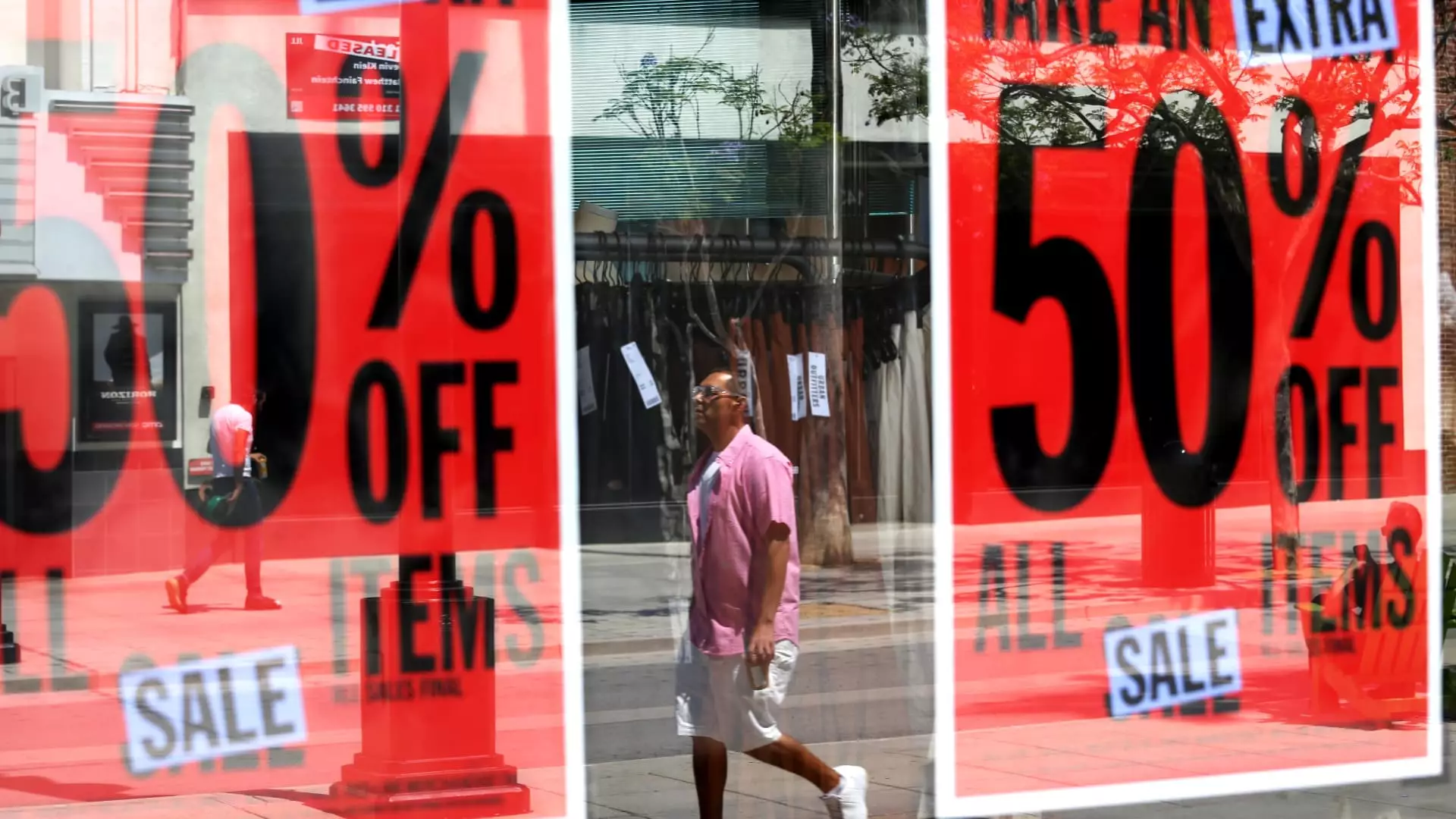In a landscape where businesses cling to stability, the effects of President Trump’s trade war are reverberating throughout the retail sector, akin to tremors from a seismic event. Retailers are finding themselves in a precarious situation as they brace for a significant decline in consumer spending. This anticipated downturn is not merely a possibility but rather an almost certainty, given the shifting economic paradigms instigated by unpredictable tariff regulations. With many retailers operating on razor-thin margins and consumer confidence waning, they are employing creative yet urgent marketing strategies to navigate the uncertain waters.
A host of brands, from direct-to-consumer powerhouses like Fashion Nova to niche players such as Knix and Bare Necessities, have begun to weave the looming tariff threat into their marketing narrative. The methods range from “pre-tariff sales”—essentially an urgent plea for consumers to stock up before prices inevitably surge—to more playful communications where retailers are candid about the uncertainties of pricing. The underlying question is whether consumers will respond to these tactics or become disengaged amid rising costs and political discourse.
Adapting to Uncertainty with Creativity
One inventive approach employed by brands is the use of humor to diffuse anxiety while simultaneously encouraging purchases. Take the case of Beis, a luggage brand that unabashedly expressed its confusion about the trade landscape, referring to the tariff situation as a “complete dumpster fire” while poking fun at its own financial tribulations. The use of humor served multiple purposes: it created relatability, lessened the stigma surrounding economic discussions, and gently nudged consumers towards buying “now, while prices last.”
This approach is particularly strategic in an environment where political affiliations can polarize consumer behavior. When brands maintain neutrality and deploy humor, they can widen their net. Humor becomes an inoculating agent, protecting the brand from being pigeonholed into one demographic, thus allowing it to appeal to a broader audience. However, while humor can attract attention, it also raises the question of authenticity: how genuine can a brand be when it attempts to lighten the atmosphere around serious economic concerns?
The Gravitational Pull of Tariffs on Smaller Brands
Interestingly, the impact of tariffs disproportionately affects smaller retailers, which often face fewer options within their supply chains compared to their larger, more diversified counterparts. For smaller brands, the challenge is not just about higher costs but survival itself. Without the luxury of expansive global networks, these businesses find themselves in a precarious situation. Their urgent need to boost cash flow before the downturn arrives is palpable; initiating promotions is a risky gamble that could either keep them afloat or sink them further.
As Lauren Beitelspacher from Babson College pointed out, small brands are far more susceptible to the whims of tariffs, which can become barriers they are ill-prepared to navigate. It raises eyebrows that in a world that glorifies entrepreneurship and innovation, small businesses are left vulnerable to macroeconomic shifts largely beyond their control. The very essence of capitalism seems threatened when the playing field is tilted so dramatically.
A Glimpse into Consumer Behavior
These evolving dynamics are manifesting in consumer shopping habits, which have become increasingly influenced by economic anxieties. Consumers who have the means are not just passive spectators—they’re proactively making purchases in anticipation of price hikes. This behavioral shift suggests a counterintuitive blend of resilience and fear; consumers are attempting to control their financial destinies amid external chaos. It poses a fascinating dichotomy: how does one balance smart purchasing to mitigate impending cost increases with the nagging worry of an unstable economy?
As some retailers scramble to employ aggressive marketing tactics and discounts to entice shoppers, others may choose a route of caution, struggling to familiarize themselves with the unpredictable pricing landscape. This inconsistency irrefutably reflects a fragmented retail environment where survival is dictated by adaptability.
Future Implications for Retail
The ongoing tug-of-war ignited by tariffs raises serious concerns about the future of retail. Will the rush to buy before potential increases lead to a short-term boom followed by a devastating downturn? The retail sector is entering uncharted territories, where both large conglomerates and small startups must balance short-term gains with long-term viability. The uncertainty created by such policies risks a culture of apprehension among consumers, which can spiral quickly into a broader economic malaise.
Thus, as the specter of tariffs looms large over retail, it serves as a bitter reminder that business isn’t just about profit margins and sales targets. It’s about navigating a complex interplay of economic conditions, consumer sentiment, and corporate responsibility—factors that collectively shape not just the bottom line but the social fabric of commerce itself.

